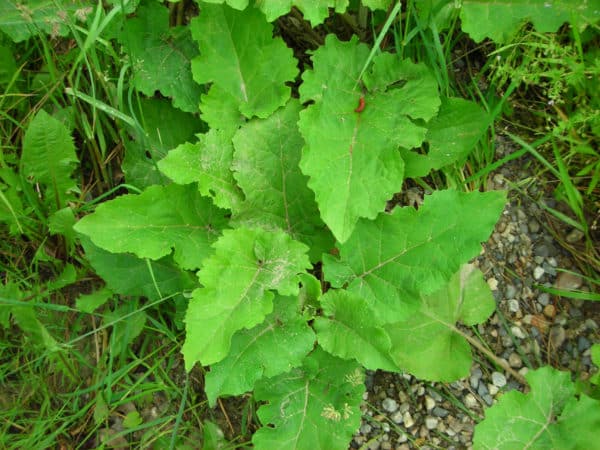Common burdock
About This Species
Common burdock (Lesser burdock, Louse-bur, Wild rhubarb) was introduced from Europe, either accidentally or intentionally as a food and medicinal crop. It can be found growing in farmlands, pastures roadsides and streambanks and each individual plant can produce up to 16,000 seeds.
It is known for its clinging burrs that attach and cling to wild and farm animals. This can cause health issues such as blindness to these animals and allows burdock to spread large distances from a single plant. These burrs are strong enough to trap birds and bats in them, leading to large ecological impacts. These burrs were the inspiration for the Velcro product. Its large leaves reduce light for other herbaceous plants, allowing it to outcompete them and grow in monocultures.
There are two other burdock species present in British Columbia, Greater burdock (Arctium lappa) and Woolly burdock (Arctium tomentosum). Burdock is designated as a Regional Noxious Weed by the BC Weed Control Act.
How to Identify
Burdock grows to 2 m tall and is an upright plant with reddish stems. Most branching stems will have large burrs on them.
Pink to purple flowers bloom from July-Oct and have distinct spiny hooked leaves surrounding the flower. When flowers go to seed the burrs are round and bristly and are up to 22 mm wide.
Mature leaves are large, heart shaped, and have characteristically hairy undersides with toothed or wavy edges. Lower leaves can grow to 50 cm long.

Take Action
Preventing development of the burred seed is key to preventing its spread. Mowing or cutting is best done before flowering to eliminate seed. To completely remove this problematic plant, the large, deep taproot must be severed at least 8-10 cm below the soil surface. Re-seed bare soil where possible, and encourage desirable, competing vegetation. Most broadleaf herbicides are also useful for control.
-
If you need advice about invasive species on your property or you are concerned about reported invasives in your local area, contact your local government or regional invasive species organization.

PlayCleanGo
Learn about best practices
REPORT TO PROTECT BC’S BIODIVERSITY

Use the app
Observe and report to protect BC’s biodiversity

Report through this website
Use our form to tell us what you’re seeing and where.






